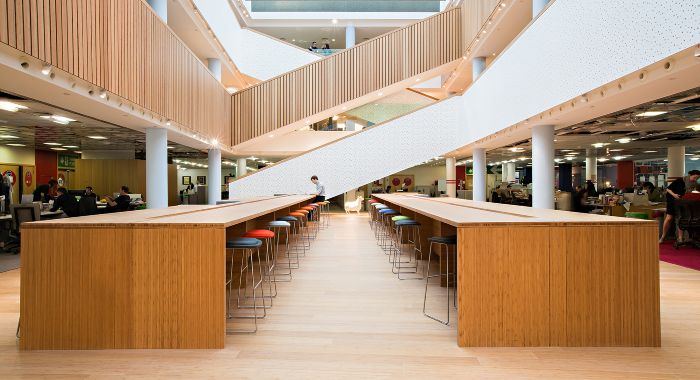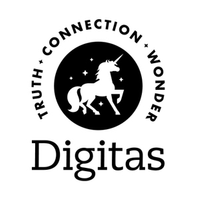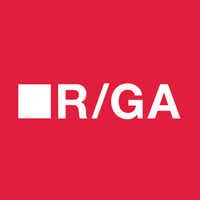Does recruitment fail female creatives? Adland recruiters share how they hire diverse talent
Ali Hanan, founder of Creative Equals – the gender diversity kitemark of the creative industry – catches up with four top agency recruiters for their take on the pathways to success for female creatives.
Diversity is a trending topic across adland right now, but the most urgent issue to address is gender equality in creative departments. As IPA president Tom Knox says: “It remains an uncomfortable truth that men dominate creative departments and this cannot be good for creativity and our ability to solve our clients’ business problems.”
With more female creatives, I believe we could shape better workplaces, better connect with customers and be more culturally relevant as an industry, particularly with our powerful female consumer base who make 85 per cent of all purchasing decisions.
The IPA’s research shows women make up just 24 per cent of creative departments. My research reveals 14 per cent of creative directors in London are women (we’re better than the US, where it’s 11 per cent). Women leave advertising colleges in equal numbers to men, but when you start naming female executive creative directors, you’re counting on your fingers. Where are all the female creative leaders?
That’s why I founded Creative Equals – to address the balance, with a hands-on industry-wide mandate for change. Recruitment – which shapes and defines the way we hire – has a huge role to play in how talent comes into the industry. Here’s what four top recruiters at some of adland’s most successful agencies are observing, and their one ‘action’ to make a difference.
Ashley Shack, creative recruiter, Wieden+Kennedy
In terms of unsolicited portfolios, we see a split of about 60 per cent male to 40 per cent female for junior and mid-weight roles, and somewhere in the range of 90 per cent male, 10 per cent female for senior roles.
We’re lucky to have a talented group of women in top creative positions. Our overall creative department is 19 per cent female and 33 per cent of our creative directors are women. We hope our leaders inspire others to strive for success, which is why we want to see a strong presence of our leaders at industry events. We’d like to offer more book crits to younger creatives to support them in the early stages of their career.
This year we’re launching an accelerator — The Kennedys — introducing different makers, thinkers, and creatives from a range of backgrounds to our agency. We’re committed to being proactive about diversity all around.
Recently we’ve been trialling various workplace initiatives. We’ve requested that internal meetings are held between 10am and 4pm, that no emails are sent between 7pm and 8am, and we’re encouraging a 4.30pm stop on Fridays. These were designed to benefit everyone at W+K London, but it’s encouraging to see mothers responding well. If working flexibly allows our people to be their best, we’re happy.
If I could change one thing...
I’d ask female creatives to make themselves more visible. Make sure to have a site with your work on it. This may sound obvious, but I often have to go on scavenger hunts looking for senior level creatives’ work. Also, sign up to be on juries and do talks. Get out there and make yourself known.
Carlo Callegari, recruitment director, BBH
At BBH, 54 per cent of our London office is female, 18 per cent of our senior creative directors are female and 31 per cent of our creative department is female. We have women in key leadership positions who are inspirational role models to our existing employees and also in attracting female talent.
Attracting senior creative female talent does seem to be a broader industry-wide challenge that we are facing. For example, we recently recruited for a digital creative leadership role: there were 12 applications for the post; just two were women. What is going on?
Can recruitment help create change? Senior female talent can play their own role here by actively managing their creative brand, particularly on networks like The Dots and LinkedIn, as well as showing personal projects outside work.
To retain talent as an industry, advertising agencies need to become more appealing to intelligent, talented females. BBH offers a range of benefits that support flexibility. We empower the individual to make a choice over their working hours and work/life blend. We have a supportive working environment, flexible working, a parenthood forum, job sharing opportunities, and emergency childcare leave, to name a few. We need to communicate these benefits we have in place to attract more female creative talent.
If I could change one thing...
I believe we need to create an industry-wide mandate for recruitment in the way we post creative jobs. We need to be mindful to use gender neutral language and imagery in a way women respond to. Take out the gender bias. So no ‘right-hand man for the job’ or ‘rock stars only’, please.
Christina Mazurowski, senior recruiter, R/GA London
Most of our recent openings have been for creative directors as we need account-focused leaders. We took a look at our gender split: one out of our six creative directors is female, so we have been seeking out women to create a diverse workforce.
The bare-faced fact is London has so few female creative leaders; I’m now sourcing talent from Europe and the US. I didn’t realise until I came to the UK that the glass ceiling is real here. But it’s not just London. At Cannes last year just 20 per cent of attendants over the age of 28 were women.
At R/GA we’re ‘gender neutral’ as to who works on what brands: we’ve men on the beauty category and women on sports brands, which is a strong message for our team. So my ‘do’ to female creatives is to vary the brands you work on. Work across all brands, and pick small, innovative brands to flex your muscles. Sometimes the big brands are more risk adverse; you’ll find it harder to do brave, groundbreaking work.
As part of creating more future leaders within R/GA, we’ve created ‘Woman Up’. We believe you need to ‘See it to be it’. Men have plenty of role models; we have so few. Creating a gender-neutral world in advertising won’t happen overnight, but with time and commitment across industry, change will happen.
If I could change one thing...
The one big change is to start hiring women based on their potential to fulfil a role, not their ‘achievements’. Research shows men apply for jobs when they meet 60 per cent of the hiring criteria and are hired on potential, where women won’t apply until they meet 100 per cent of the criteria – and they’re hired on proof. So let’s start hiring on potential.
Mary Hurlock-Murphy, director, international talent acquisition and mobility, DigitasLBi
With every role, our recruiters must be deliberate and thoughtful in the way we search, asking, ‘have I done a deep enough dive?’ As recruiters, if we’re not proactive and consciously looking for a more rounded candidate pool, we find referrals and external partners bring in a pool of talent reflecting the current market place, which means at present we’re likely to bring in more of the same.
In this role, we’re always under business pressure on to fill new hires, but looking for diverse talent takes time and resource; our business understands and, even better than that, champions this. Having senior leadership support is critical to turning the dial. Our UK chief executive Mike Islip champions this mandate, so as an agency we must walk the talk.
For example, recently we were looking for senior creatives. To fulfil our search for the best, as well as our commitment to diversity, we looked proactively for women. We created a map of around 30 women in London, about 13 per cent of our applicants.
In our present database, from a talent list of about 1,000 creatives, approximately 20 per cent are women. At DigitasLBi, one third of our current creative directors are women; Helen Fuchs is our executive creative director.
When you ask for talent internally, I’m conscious ‘like hires like’; people recommend their own network. That’s why we’re socialising roles through the Publicis Groupe Viva Women network, so women put forward peers from their social group.
We make sure women are on the interview panels; it means women feel at ease when they’re being interviewed, and creative work is seen through both a male and female lens.
If I could change one thing...
Often recruiters start with a Google search so I’d like to see candidates better tag their folios and CVs so they come top of the search. Female creatives, tag your folios with ‘award-winning’, ‘top creative director’ and ‘female creative director’ so you can be easily found. Recruiters need to work harder to ‘see’ and candidates need to work harder to be ‘seen’. Also, because female creatives are often put on ‘female centric’ brands and/or may have a gap due to taking time out of the external workplace to raise families, it would be great to have examples of ‘speculative work’ showcasing what they would have done with a ‘non-female’ brief. Candidates often get dropped for not having breadth of work or work gaps, so be proactive in addressing this.
So, does recruitment fail female creatives?
Not on Creative Equals’ watch. We are challenging recruiters to sign up to our five-point charter for change – simple actions that together will drive the single biggest change agencies, clients and creatives need to see.
- Written by Ali Hanan, founder of Creative Equals. 28th July 2016, The Drum
http://www.thedrum.com/news/2016/07/28/does-recruitment-fail-female-creatives-adland-recruiters-share-how-they-hire-diverse







